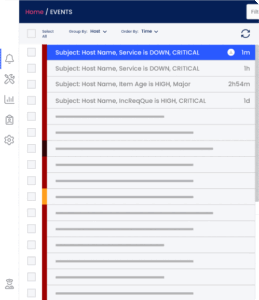With advances in the field of IT, the amount of data needed to manage IT Operations has grown. In particular with more complex environments, such as the SaaS world, the amounts of data and raw data needed to manage operations have grown exponentially. Managing data manually has become a waste of professionals’ skill sets, which could be better used in analyzing and applying the conclusions drawn from the raw data, and not dealing with basic issues that may arise.
To this end, many businesses have begun turning to AIOps – artificial intelligence for IT operations. These are platforms which employ analytics technologies such as big data and machine learning to augment IT operations. Recently, AIOps has become a popular buzzword – everyone wants to talk about it or use it.
AIOps platforms are utilized to analyze and manage the huge quantities of raw data and use analytic algorithms to identify and resolve issues commonly found in IT operations. These include problems such as locating outlying or anomalous data, detecting chronic issues, and employing solutions independently. AIOps seems like the perfect option in a world in which businesses must quickly resolve issues before they can impact customers or operations. This makes it easy to see why so many businesses embrace the platform and see it as a breakthrough in the fields of both IT and AI.
It Ain’t Perfect
Despite all the benefits of AIOps, it does have its catches. Using AIOps on a system with poor infrastructure, application logic, or data will lead to the AI drawing incorrect conclusions- leading to more poor decisions being made based on even more inaccurate data. Using AIOps on a system that is flawed and inefficient will just make any pre-existing problems worse rather than fixing them. This isn’t entirely the fault of the AI but rather of the system it is placed into.
Does this mean you should jump on or off the AIOps bandwagon? To truly understand if AIOps is a viable option, it’s important to look beyond the positive attention it has garnered and honestly assess the benefits and challenges of working with AI to resolve issues from critical data.
The Good Side of AIOps
We can’t deny the benefits of AIOps – after all, it’s a popular buzzword for a reason. Here are the main benefits that attract companies to use an AIOps solution:
Optimizing skill and eliminating toil
AIOps give IT professionals whose skill set would otherwise be wasted on basic data analysis and resolving simple issues an opportunity to maximize their time and skills-set and focus on more complex tasks and not waste time on manual labor and toil.
Small issues have a smaller impact
The platform can handle small issues or anomalies independently leading to minor problems being found and addressed before they have a chance to impact the client or possibly business operations.
Targeted focus
Though there may be some pushback at first, the platform does not aim to replace IT engineers, but rather to augment their work and allow them to shift their focus to more critical tasks and not simple analytics and troubleshooting.
The Pitfalls of AIOps
There are two sides to every coin, and it’s important not to be swept away by “cool” solutions without looking at the negatives as well, and AIOps does have a few negatives:
Unreliable results and poor data quality
AIOps may be built to handle immense quantities of data, but its data quality can be inconsistent. Users have found that crucial information is often left as unstructured data and not included in analytics. This can lead to incorrect conclusions and faulty analyses.
Assuming efficiency
It’s easy to get sidetracked and assume the efficiency of AIOps by looking at the number of anomalies or issues resolved, but it’s important to remember to look at the bottom line. Has the platform accomplished goals such as lowering costs, heightening efficiency, or creating wider availability in the system?
Supervision and maintenance
All new technologies need their time to be integrated and monitored to ensure they’re fully functioning. AIOps is no different. The platform is intricate, and as with any program relying on algorithms, the results coming in may be accurate – until they aren’t. Blindly trusting the platform could risk an error slipping by unnoticed.
What’s the verdict?
While AIOps has definitely made a big splash in the IT world, it might not be worth jumping into head-on. Although the hype may seem justified at first glance, it’s also clear to see why some companies are skeptical of it. IT managers are hesitant with entrusting sensitive data and the responsibility of data management to a platform that is still developing. Many users claim to be disappointed, saying the platform does not live up to the hype, often returning faulty or inaccurate results which don’t fully reflect the data.
Overall, it’s still early days for AIOps, and the technology is still evolving. For now, most businesses, while excited by the opportunities the platform promises, prefer to opt for a “wait and see” approach before subscribing to a system which may be dazzling but is still riddled with faults. Only time will tell if AIOps is truly the future of IT operations.


